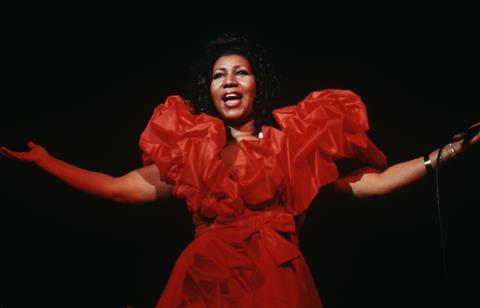‘The trials many of our ancestors have overcome as black Christians are what make the heart of the music; the passion, the depth, the power, so compelling,’ said Hope Bonarcher.

The very thing that spurs my heart on when I listen to my favourite gospel music is the dark legacy from which it was birthed. Black gospel music originated in the 1920s from the American city of Chicago, where it was popularized by singer-songwriter Thomas A. Dorsey, best known for songs like Precious Lord Take My Hand.
At first, the music was largely derided for its secular beats, accompanying biblical faith themes.
At first, the music was largely derided for its secular beats, accompanying biblical faith themes. Before this, in the 19th century, music emanating from black churches was a combo of spirituals (the songs of enslaved people) and white hymnody. In fact, some sources credit the “lining out” of psalms from the Scottish Gaelic Presbyterian churches of the Outer Hebrides (which still continues to this day), to have influenced the call and response style of gospel music from the American South. This is where the lead person sings out a line to be repeated in chorus by the congregation,
Before this, in the 19th century, music emanating from black churches was a combo of spirituals (the songs of enslaved people) and white hymnody
A collection of spiritual songs and hymns selected from various authors, is credited by Encyclopaedia Britannica as the first hymnal created for black usage in 1801. It’s texts are credited to British clergymen of the 17th and 18th centuries such as Isaac Watts and Charles Wesley, and also included poems written by Richard Allen, black founder of the African Methodist Episcopal Church in America, and some of his parishioners.
The hymnal contained no music and post Civil War, the music that was included was stark and unadorned. So in time, with the influence of jazz, blues and ragtime music in the 1920s, the popularity of black gospel music began to take off.
You may be familiar with singers like Mahalia Jackson. It’s impossible to watch her moving rendition of Trouble of the World in the 1959 version of Douglas Sirk’s melodrama Imitation of Life, without collapsing into a fit of tears (I dare you)! Jackson’s insertion into this pivotal scene by what was, at the time, one of Hollywood’s more commercially and critically successful filmmakers, shows the crossover appeal of the genre.
Read more on black history within the Church
Black History Month: Watching the inclusive work of Sharmadean Reid MBE reminds me of the gospel
Aretha Franklin’s seminal album, Amazing Grace, featuring the Reverend James Cleveland, debuted in 1972 and earned her a Grammy award, and double platinum status as her highest grossing album. Try turning on Mary Don’t You Weep, and closing your eyes, you might just feel like you are right there watching the Lord Jesus call Lazarus from the tomb! More modern gospel songs like Whitney Houston’s I Go to the Rock, from The Preacher’s Wife soundtrack album and Yolanda Adams’ In the Midst of It All, are literally my soul’s medicine, when I’m facing the storms of life and need to stay focused on the grace and goodness of God to keep me on steady ground.
I can feel the reverent music reach into an intangible place in my heart, imploring me to lift up mine eyes to the hills from where my help comes from (Psalm 121, and one of my favorite Brooklyn Tabernacle Choir songs). It feels as though the lived experience of those who have suffered, endured, hoped well and overcome obstacles, even if only in glory, lives on through the impassioned voices of gospel singers and musicians through generations, encouraging me in perseverance; I can go on another day!
“Dear brothers and sisters, when troubles of any kind come your way, consider it an opportunity for great joy. For you know that when your faith is tested, your endurance has a chance to grow. So let it grow, for when your endurance is fully developed, you will be perfect and complete, needing nothing.” James 1:2-4 NLT




































No comments yet